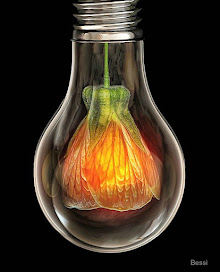Peaty, feinty and woody flavors in whisky have an interesting connection to woody and oriental categories in perfumery. This is particularly evident in formulas with smoky notes. The allure of smoke and its application in whisky and perfume tells us something about our own essence, the persona we wish to convey, as well as the alchemy we imbibe by transference. Glass Petal Smoke suggests reading this post with a glass of single malt Scotch after applying one of the leather inspired fragrances mentioned in the last section of this article.
Smoke Aroma in Perfume and Whisky
Smoke is an essential element in the history of perfume. The word "perfume" is derived from the Latin per fumum which means "through smoke". This reflects perfumery’s roots which began with incense. Ancient Egyptians believed that perfumed smoke was pleasing to the gods and carried their prayers to the heavens.
Modern perfumery, as we know it today, was sparked by the popularity of scented leather gloves in France. Fragrance was added to tanned leather in order to reduce animalic odors and smoky notes from the tanning process. Catherine d'Medici (who started the glove craze) transformed her passion for scented gloves into a passion for personal perfume which in turn was a catalyst for the formation of the Guild of Master Perfumers and Glove Makers in 1656.
The drying of damp malt over peat fire incenses the barley used to make Scotch whisky. This creates a link between whisky and the early history of perfume as incense. Irish Turf/Peat Incense is evidence of this connection.
Peat smoke contains phenols which are characterized by smoky, tar-like and petroleum aromas that evoke a medicinal impression, one that single malt Scotch lovers are quite fond of, (those who don't like peaty flavor relate it to the smell of Band-Aids). One wonders what goes through the minds of those involved in the malting portion of the whisky making process as the smell of smoke never loses its mysterious ethereal quality.
Smoke Notes in Perfume Formulas and their Relationship to Whisky
Smoke in perfumery is a fantasy element and is found in perfumes inspired by the aroma of leather and incense. These types of fragrances fall into the oriental and woody family of aromas based on Michael Edwards' fragrance wheel. The perfumer’s interpretation of smoke does not enter the senses like a dramatic flambé. Like all olfactory experience it enters consciousness, triggers emotion and then floods the mind with autobiographical memories associated with smoke. Smoke is evidence of the presence of fire, an element that can be used to transform or destroy; it is the Shiva of fragrance notes. This lends archetypal power to smoky notes in flavors and fragrance.
Leather notes, in particular the Givaudan aroma molecule Pyralone, 6-(1Methylpropyl)quinoline, encourage a soft smokiness in perfume formulas with balsamic, woody and tobacco facets (complementary notes that are also present in whisky). A smoke effect supported by woody notes and balsamic ingredients like vanilla and amber creates an olfactory impression akin to a living breathing entity. A good example of this is Cuir de Lancome by Lancome. A smokier example would be Cuir de Russie Parfum by Chanel. If you smell the vintage version of Cuir de Russie Parfum, whose formula included essential oil of Birch Tar, the smoke impression is colored by notes of burnt wood, leather and phenols; the same notes that mark the distinctive aroma of Scotch whisky.
The Parallel of Peat Aroma in Whisky and Oakmoss in Perfumery
Peat is the terroir of Scotland and the heart and soul of Scottish whisky. Before it is burned for fuel, fresh peat smells like a newly plowed field with mild traces of a brackish bog. In perfumery, the defining ingredient in the chypre family of fragrances is Oakmoss* (Evernia prunastri) and it possesses some of the qualities found in peat moss (both are lichens). Smelled neat, Oakmoss evokes images and emotions associated with the magnificent carpet of earthy scents found in a damp forest floor. It has a seaweed-like quality which is best described as a mingling of hay, sap and brine.
Oakmoss is the defining ingredient in classic chypre perfumes like Guerlain's Mitsouko and Miss Dior Originale (not Dior Cherie, confusingly repackaged as Miss Dior in the U.S.). The smell of Oakmoss is instantly transporting as many have experienced the majesty of parks, forests and their related aquatic environments. These memories are rooted in childhood which makes the effect of this ingredient quite powerful. The current fascination with Fir as a flavor agent in mixology and cooking is related to this type of nostalgic and emotional connection.
The Cult of Smoke: Culture vs. Trend
Aromas and flavors follow trends that are ignited by the past (history, heritage, cachet, etc.) and the present (emotional need, response to economic times, etc.). On the fragrance side, the 1980’s were economic boom times and that is when fragrances were formulated to be loud and boisterous. After September 11th consumers in the U.S. were cocooning and the “green” trend began as we questioned our authenticity and the politics of oil. As a culture grows more confident, and economies get stronger, the desire for smokier flavors and fragrances rises (interest in all things "bacon" has yet to fade and includes the emergence of a bacon perfume originally formulated by a Parisian butcher in 1920).
The desire to connect with smoke is a reflection of the need to reconnect with natural elements that symbolize power. Dr. Richard V. Lee believes that, "The rituals and rules that govern symbolic controlled combustion are ancient, perhaps a part of our biologic evolution." The kind of smoky product you choose to favor depends on what totem fits into your concept of self and heritage.
Achieving Balance in Smoke Flavor and Aroma
There are additive, subtractive and interactive reactions that occur when materials are dosed at different levels in perfumery, much like the chemistry of cooking. Smoke can overpower flavors and fragrances, and distort or eliminate distinctive nuances. In perfumery an overdose of a smoke effect can smell like burnt rubber which prompts a wincing reaction and triggers the part of the brain that detects danger and sparks a “fight or flight” response. The sense of smell is meant to keep us from harm so we don’t enter dangerous life-threatening environments or eat spoiled food that will make us sick. This is not an instinct we want to provoke.
The right dose of smoke in perfumery makes a bouquet come to
life in complements and contrasts. The same is true for whisky via peat smoke. Whisky flavor is also influenced by the the
type of barrel used to age the drink, (charred, uncharred, previous liquid guest). The wood will impart
sweet, woody, resinous or animalic nuances into the whisky and that is where the flavor playground lives. Get too smokey and one runs the risk
of creating a whisky that tastes jagged or resembles smoke flavor additives used in food.
Somewhere in the flavor spectrum of smoke is perfectly pitched smoke; the springboard for further flavor development. Distillers and flavor chemists would be foolish not to consider “smoke” inspired perfume for inspiration as they are shadows of the same alchemy.
Glass Petal Smoke recommends these leather inspired fragrances (in addition to the ones mentioned in this article): Chambre Noire Eau de Parfum by Olfactive Studio, Aleksandr Eau de Parfum by Arquiste, Cuir Mauresque by Serge Lutens, Bel Ami by Hermes, Comme des Garçons 2 Man, Tuscan Leather by Tom Ford, Cuir de Nacre by Anne Girard and Cuir Fétiche by Maître Parfumeur et Gantier.
Somewhere in the flavor spectrum of smoke is perfectly pitched smoke; the springboard for further flavor development. Distillers and flavor chemists would be foolish not to consider “smoke” inspired perfume for inspiration as they are shadows of the same alchemy.
Glass Petal Smoke recommends these leather inspired fragrances (in addition to the ones mentioned in this article): Chambre Noire Eau de Parfum by Olfactive Studio, Aleksandr Eau de Parfum by Arquiste, Cuir Mauresque by Serge Lutens, Bel Ami by Hermes, Comme des Garçons 2 Man, Tuscan Leather by Tom Ford, Cuir de Nacre by Anne Girard and Cuir Fétiche by Maître Parfumeur et Gantier.
Notes:
The dye used to color the wool used in Harris Tweed suits were once made from lichen derived dyes called crottle. Because of this, vintage Harris Tweed fabric possesses a chypre-like aroma. Lichens have an interesting relationship with humans which falls under the subject of ethnolichenology.
Oakmoss has been subject to scrutiny by Scientific Committee of Consumer Safety in Europe. Many in perfumery believe that a culture of fear is clouding the studies, but no one has made an inquiry into the scientists conducting the studies. As a result, use of oakmoss has been reduced, eliminated or replaced in some formulas.
Some of the natural ingredients used to create smoke/leather
notes in perfume include Castoreum Absolute, Saffron, Cade and the rare and storied Agarwood
(Oud).
Further Reading:
"The Seven Major Scent Groups of Whisky," by Mash Bonigala.
Whisky for Everyone, a fabulous whisky website.
Dr. Richard V. Lee has some interesting things to say about the culture of smoke in his paper titled, "Pleasure, Pain and Prophylaxis: Olfaction (the Neglected Sense)".
Image Credits:
"Occult Dancer," by artist Nicolai Konstantinovich Kalmakov.
Photo of Peat Gatherer in the Isle of Skye Scotland UK from Tour Scotland.
Image of Whisky Glass from Normann Copenhagen.
Further Reading:
"The Seven Major Scent Groups of Whisky," by Mash Bonigala.
Whisky for Everyone, a fabulous whisky website.
Dr. Richard V. Lee has some interesting things to say about the culture of smoke in his paper titled, "Pleasure, Pain and Prophylaxis: Olfaction (the Neglected Sense)".
Image Credits:
"Occult Dancer," by artist Nicolai Konstantinovich Kalmakov.
Photo of Peat Gatherer in the Isle of Skye Scotland UK from Tour Scotland.
Image of Whisky Glass from Normann Copenhagen.














